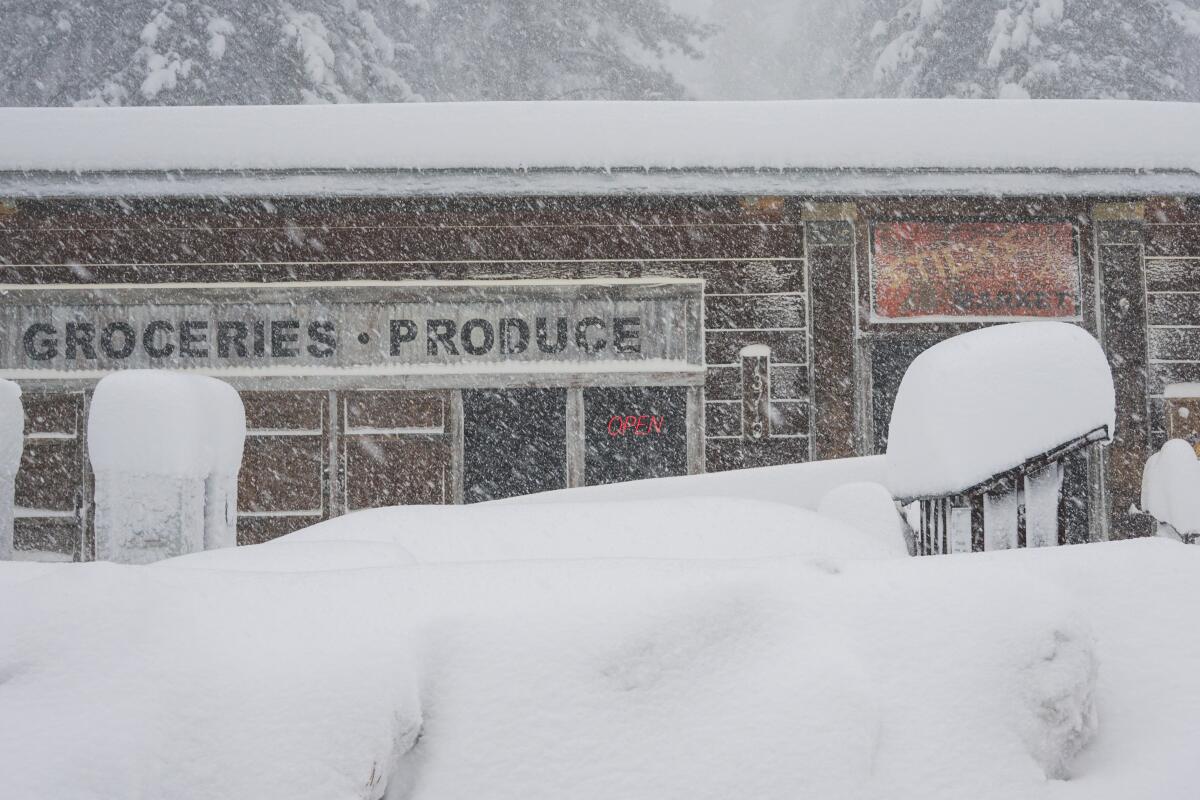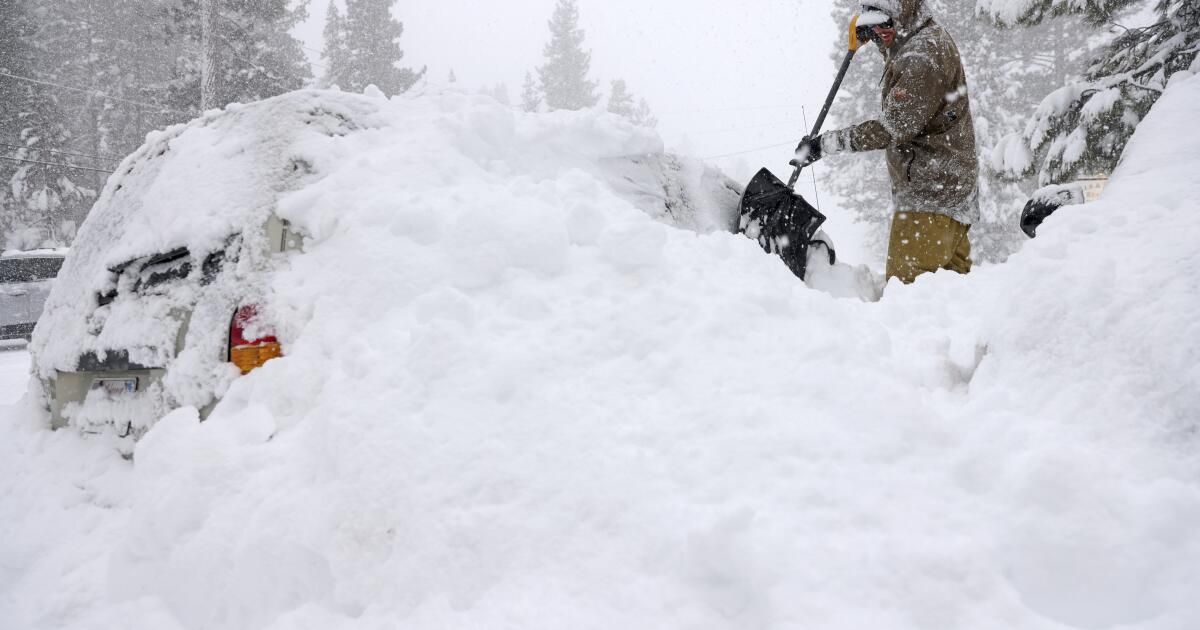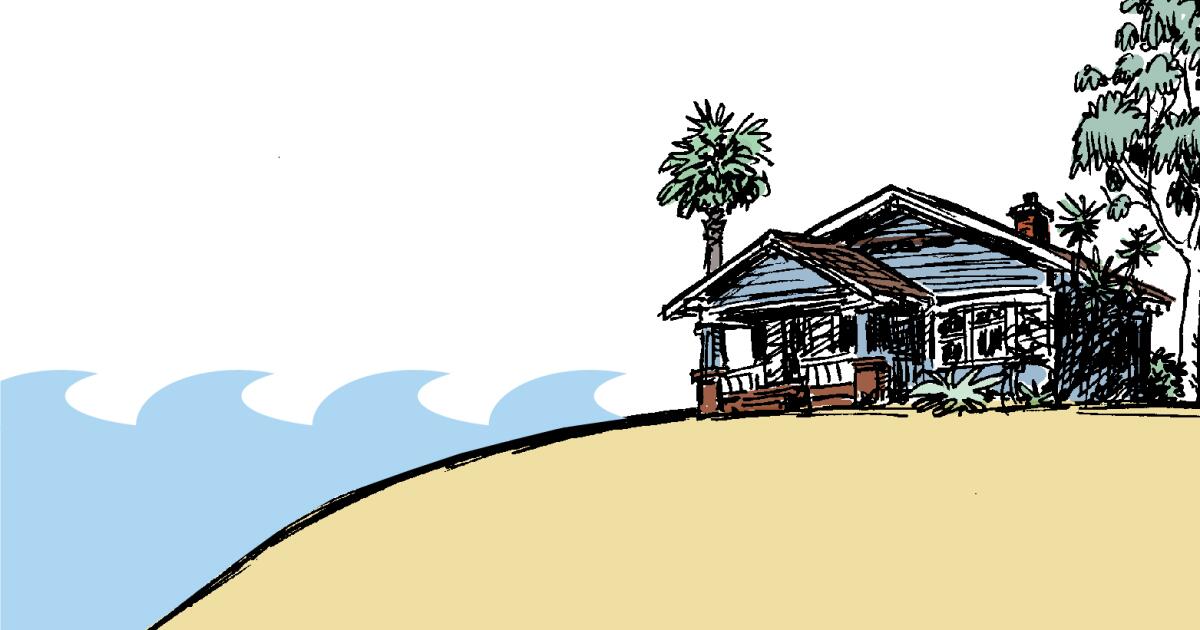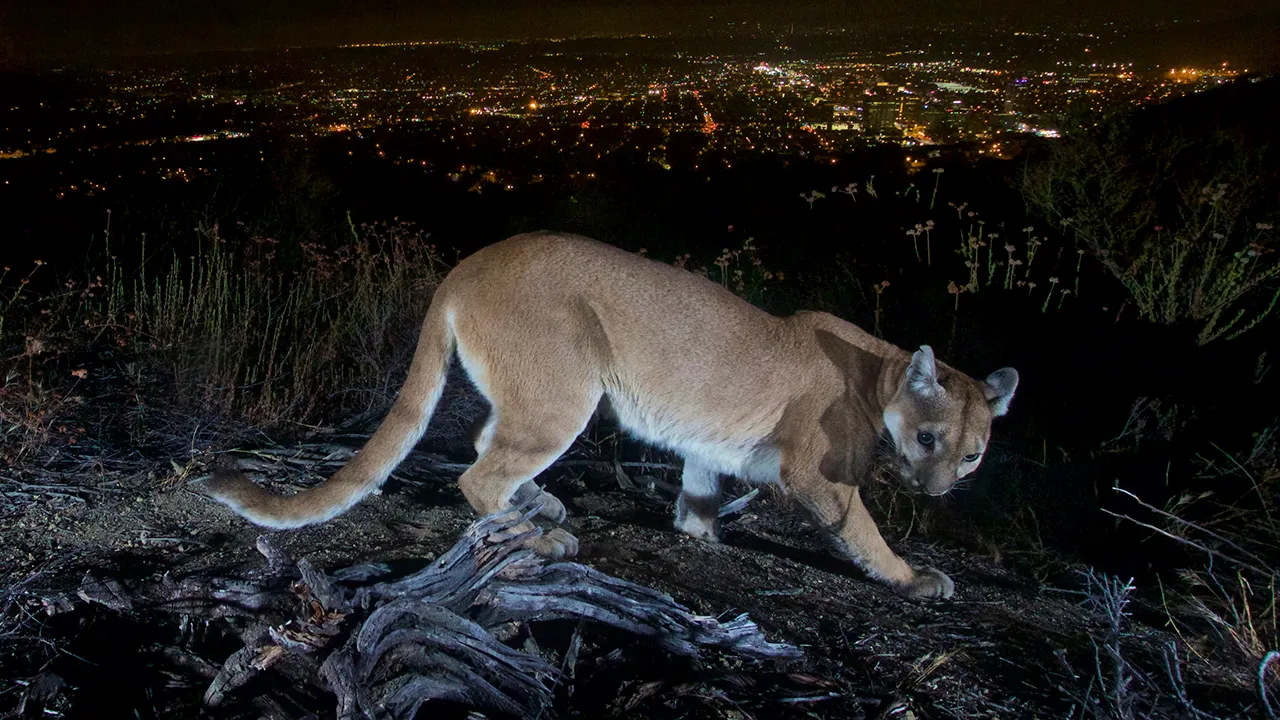A rare snowstorm sent its final flurries of snow and strong winds across California's Sierra Nevada on Sunday, keeping some major roads and ski resorts closed from Lake Tahoe to Mammoth.
The Mammoth Mountain ski area was closed as strong winds up to 70 mph, with higher gusts, battered the mountains and blew snow.
“It is still too windy to operate and allow lift maintenance to safely complete their checks or ski patrol to complete necessary avalanche mitigation,” Mammoth Mountain said on its website.
The blizzard dumped between 5 and 7 feet of snow in parts of the Sierra Nevada over the weekend. The National Weather Service in Sacramento said a rare blizzard warning would remain in effect until midnight Sunday for areas above 6,500 feet in elevation, while other parts of the Sierra Nevada were under a winter storm warning.
Snow continued to fall in the mountains on Sunday, with an additional 1 to 2 feet of snow forecast in areas above 4,000 feet elevation.
A snowplow is used to clear a road during a storm in Truckee on Saturday.
(Brooke Hess-Homeier/Associated Press)
Heavy snow caused several road closures over the weekend. US Highway 50 reopened Sunday morning, allowing tracked vehicles to reach the South Lake Tahoe area.
Just west of Echo Summit on Highway 50, some vehicles were temporarily trapped in several feet of snow that slid from the mountainside onto the road, said Steve Nelson, spokesman for the California Department of Transportation. He said a crew towed the vehicles and no one was injured.
On the north side of Lake Tahoe, Interstate 80 remained closed due to snow for a third day.
And in the Eastern Sierra, U.S. Highway 395 was closed in Mono County, where Caltrans crews were working to remove snow.
Even as blizzard conditions began to ease, the National Weather Service urged people to avoid driving in the mountains.
“Winds can reach up to 45 miles per hour at those higher elevations, and as the snow continues to fall, that makes for really dangerous travel conditions,” said Sara Purdue, a meteorologist with the National Weather Service in Sacramento. “We still strongly advise against travel to mountainous areas.”

Snow covers the landscape in front of a store in Truckee, California. The largest storm of the season closed a long stretch of Interstate 80 and gusty winds and heavy rain hit lower elevations, leaving tens of thousands of homes without power.
(Brooke Hess-Homeier/Associated Press)
Another approaching storm is expected to bring more snow Monday and Tuesday in the Sierra Nevada.
“It won't have as much impact as this system. But we're still looking at potentially several feet of snow at higher elevations,” Perdue said.
Snow and high winds created dangerous or unworkable conditions at several ski resorts. In Palisades Tahoe, all lifts were closed Sunday due to “severe weather conditions.”
Sierra-at-Tahoe said on its website that “the intensity of the storm did not diminish; in fact, it doubled overnight,” and the winds built up deep drifts that workers were in the process of clearing.
South of Tahoe, Kirkwood Mountain Resort said it opened some of its lifts after initially suspending them to ensure safety.
The snowstorm arrived on Friday night with extremely strong wind gusts that reached up to 300 kilometers per hour in one place. The National Weather Service said wind gusts of more than 100 mph were expected in parts of the Sierra into early Monday.
An avalanche warning was in effect in the Eastern Sierra. The National Weather Service warned people to stay out of rural areas, such as those planning to cross-country ski or snowmobile, saying strong winds “will continue to overload the snowpack, which contains buried weak layers.” which will create very dangerous avalanche conditions.
Along with the strong winds, two tornadoes touched down in parts of the Central Valley. No injuries were reported.
“From Merced to Bakersfield, we had a very strong jet stream right above us,” said Carlos Molina, a meteorologist with the National Weather Service in Hanford. “Winds of 50 to 70 mph were whipping the snow that fell over the mountains and creating blizzard conditions.”
Molina said Sunday's snowstorm was “pretty much subsiding” as the weather system moved beyond California into neighboring states. He said the next approaching storm doesn't have the ingredients to produce blizzard conditions, but will bring more snow and rain.












